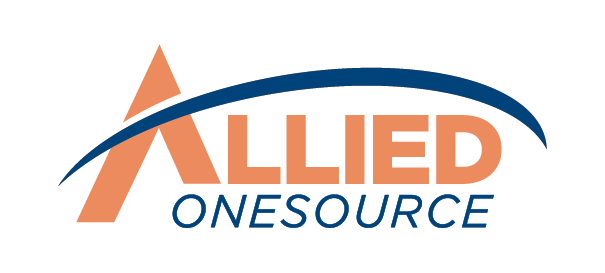Managing Stress in the Workplace: Tips for Employees to Find Balance and Resilience
Across the United States, stress and burnout have become increasingly common, particularly as employees reach the mid-year mark. Many workers, regardless of industry, report feeling drained, overextended, and unable to keep up with demands.
To stop yourself from feeling this way, you need to learn how to recognize the early signs of burnout and prevent burnout through proper stress management. By understanding the root causes of job stress and implementing practical solutions, you can build resilience and maintain a healthier work-life balance.
What is Burnout?
Burnout refers to the mental and physical exhaustion caused by prolonged exposure to work stressors. The World Health Organization (WHO) classifies burnout as an occupational syndrome resulting from chronic job stress that has not been successfully managed.
It can manifest through warning signs like:
- Depleted energy and exhaustion,
- Increased pessimism,
- And reduced professional effectiveness.
All of these symptoms can lead to lower levels of productivity and motivation. Recent workplace trends indicate that burnout is driven by rising workloads, digital overload, and blurred boundaries between work and personal life. A report by Gallup found that nearly 44 percent of employees experience organizational stress daily, with younger workers and remote employees reporting higher levels of burnout.¹
In addition, rapid advancements in AI and automation have changed job expectations, adding new pressures for employees to upskill and remain competitive in their roles. While awareness of burnout has increased, it remains a persistent challenge across industries.
But where exactly does stress come from? Which part of your working life causes the negative emotions you may be feeling?
Common Causes of Workplace Stress and Evolving Challenges
If you are experiencing stress frequently, it’s important to identify the source to combat it. Here are some common examples of stressors you may be facing:
Read More: Taking Care of Your Employees: The Importance of Valuing Workers' Wellness and a Slow Work Mindset
Excessive Workload
It’s easy to get overwhelmed and stressed if you find yourself with an unmanageable workload. Juggling heavy workloads, tight deadlines, high expectations and a long to-do list can cause you to feel like your working hours are not enough.
This forces you to complete tasks outside of working hours, reducing opportunities for rest and recovery. Ultimately, this leads to a work-life imbalance that increases stress – even when you are at home.
Blurred Work-Life Boundaries
While the rise of remote, hybrid and flexible work offers benefits, they have also introduced new challenges. Many remote workers struggle with increased isolation, communication gaps, and the expectation of being constantly available.
This can cause you to struggle to “switch off" after work hours, leading to digital fatigue, increased stress and burnout.
Without clear work-life boundaries, your stress levels can escalate. If need be, speak with your employer to balance flexibility and clear company policies that support your well-being. For instance, companies like Microsoft have implemented “no-meeting Fridays” to give employees dedicated time for focused work and recovery.
Limited Career Growth and Upskilling Pressures
The need for self-development is natural for any professional. However, stress can also come from feelings of stagnation. If you feel like your career journey or your growth at your current employment is not leading anywhere, you may develop emotions like frustration, disengagement, or even depression.
This demotivation and uncertainty about the future can cause significant stress. In today’s rapidly changing workplace, access to upskilling and reskilling programs and a clear pathway for advancement are essential for career progression and job satisfaction.
Nonexistent Social Support
Humans are inherently social creatures, and a lack of support at work can exacerbate your stress. Whether it’s a challenging project or a frustrating commute, having no one to share these experiences with can lead to bottled-up emotions and heightened negativity. A supportive workplace, on the other hand, can act as a buffer against stress and foster resilience.
Technology Overload and Insecurity
While AI and automation have streamlined many processes, they have also introduced concerns about job security and the need for continuous learning. As a result, you may feel the pressure to quickly adapt to new technologies to remain relevant in a shifting workforce.
For example, an IT professional may face stress from rapid project turnarounds and the constant need to stay updated with evolving technologies. Similarly, as a call center employee, you may feel pressured by high call volumes and the need to meet strict performance metrics.
The Future of Jobs report highlights that six in ten workers will require training to keep pace with technological changes before 2027, but only half of workers are seen to have access to adequate training opportunities today.² This pressure can lead to anxiety and burnout if not managed properly.
Tips For Managing Stress in the Workplace
Managing stress requires continuous effort and self-awareness. Here are practical ways you can manage stress in the workplace:
Pause and Reflect
The first step to managing or eradicating stress is to find its source. Set aside time to pause and reflect on your daily work life. Consider using mindfulness techniques, such as meditation or journaling, to help calm your mind and gain clarity.
Ask yourself:
- What part of my workday causes the most dread?
- Are there tasks, situations, people or interactions I consistently avoid?
- How do I feel at the end of the day—energized or drained
Answering these questions lets you pinpoint your stressors and address them proactively. Incorporating microbreaks- short, intentional pauses—can also help reset your focus and prevent stress buildup. For example, taking a five-minute walk or practicing deep breathing exercises can significantly improve mental clarity.
Prioritize Tasks Strategically
A heavy workload can feel overwhelming but breaking it down into manageable steps can help. Start by creating a comprehensive list of your tasks. Then, identify which ones are most critical. Tools like the Eisenhower Matrix (urgent vs. important) can help you prioritize effectively.
Also, instead of setting broad objectives like “launch a new project,” outline specific smaller actions such as “gather initial data” or “schedule a planning meeting.” Setting smaller, manageable, realistic goals prevents overwhelm and boosts productivity.
You can also use AI-driven task management tools like Trello or Asana to organize priorities and automate repetitive tasks. This frees you up with mental space for more meaningful work.
Build a Support System
You are not alone in your workplace struggles. In fact, a study found that 3 in 4 employees in the US experience burnout at least sometimes, highlighting how common this issue is.³ So instead of bottling up your emotions and experiences, it's best to share them with people who can relate and possibly offer you solutions.
Cultivate a network of trusted individuals—coworkers, mentors, friends, or family members—who can offer support, advice, guidance, encouragement or simply a listening ear. Sharing your thoughts and concerns with others is a proven way to relieve stress and gain perspective.
Establish Work-Life Boundaries
If you’re working remotely or in a hybrid model, establish clear boundaries between work and personal time to maintain a healthy balance. Create a dedicated workspace, set specific working hours, mute work emails after hours, schedule regular breaks, and ensure tasks don’t spill into personal time.
Prioritizing self-care helps you mentally disconnect and recharge, thereby preventing burnout. Be sure to clearly define and respectfully communicate any measures you put in place for your personal time to be respected. This can be by setting an “email curfew” to discourage after-hours communication
Engage in Stress-Relieving Activities and Advocate for Them
Introduce activities that promote relaxation and well-being into your day. Regular exercise, hobbies, or even a short walk outdoors can significantly reduce your stress levels and enhance resilience. Be sure to utilize any wellness programs your employer provides as this will help you improve engagement and productivity.
If your workplace doesn’t offer mental health benefits, consider advocating for them. Many organizations are now providing access to therapy, mindfulness apps, or wellness programs. If these resources aren’t available, explore community-based options or online platforms that offer affordable mental health support.
Read More: 9 Wellness Initiatives for a Vibrant and Energized Workforce
Leverage Workplace Technology
While AI-powered tools and automation can reduce the burden of repetitive tasks, they should be used to enhance efficiency—not extend your workday.
Leveraging workforce management software can help optimize scheduling and reduce administrative overload.
If you work in a call center, AI-driven analytics tools can assist with customer interactions, allowing you to focus on complex problem-solving rather than routine queries. Setting boundaries with digital tools, such as limiting after-hours notifications or using productivity apps to streamline workflows, ensures that technology serves you—not the other way around.
Embrace Lifelong Learning
Instead of fearing technological changes, embrace them as opportunities for growth. Take advantage of training programs, online courses, or certifications to upskill and stay relevant in your field. This proactive approach can reduce anxiety and boost your confidence.
Struggling with Workplace Stress? Manage Work Stress with Allied OneSource
If you’re struggling with stress and unsure where to turn,
Allied OneSource is here to help. We provide guidance and support on navigating workplace challenges, and career growth opportunities to help you thrive in your professional journey.
Stress shouldn’t hold you back from achieving your full potential. Reach out today and take the next step toward a more balanced and fulfilling career.
References
- Workers are historically more stressed out, disengaged for these reasons: Gallup poll. (2023, June 16). The American Institute of Stress. https://www.stress.org/news/workers-are-historically-more-stressed-out-disengaged-for-these-reasons-gallup-poll/
- The Future of Jobs Report 2023. (2023a, April 30). World Economic Forum. https://www.weforum.org/publications/the-future-of-jobs-report-2023/digest/
- Employee burnout: the causes and cures. (2023, August 2). GallUp. https://www.gallup.com/workplace/508898/employee-burnout-causes-cures.aspx











